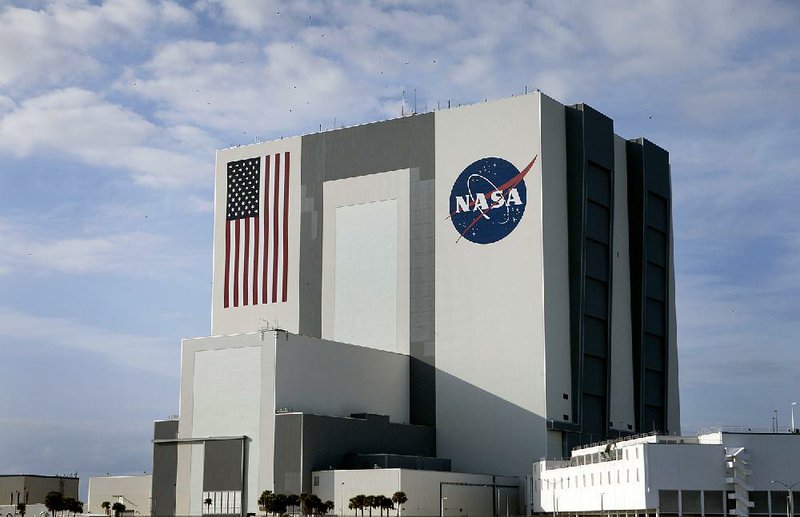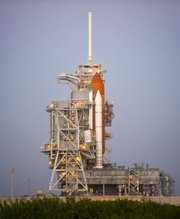ORLANDO, Fla. — Does anyone need a 15,000-foot landing strip? How about a place to assemble rocket ships? Or a parachute-packing plant? An array of aerospace tracking antennas? A launchpad?
Make an offer, says NASA, which is quietly holding a going-out-of-business sale for the facilities used by its space-shuttle program.
The shuttle flights ended in July 2011, when Atlantis made its final touchdown. That orbiter, along with Discovery and Endeavour, is now a museum piece. As soon as some remaining cleanup and wind-down are finished at Kennedy Space Center, the shuttle program will be history.
That has prompted NASA to advertise a long list of facilities and equipment as available for use, lease or, in some cases, outright purchase by the right business.
Among them: Launch Pad 39A, where shuttles were launched; space in the Vehicle Assembly Building, the 526-foot-tall structure first used to assemble Saturn V-Apollo rockets; the Orbiter Processing Facilities, essentially huge garages where the shuttles were maintained; Hangar N and its high-tech test equipment; the launch control center; and various other buildings and chunks of undeveloped property.
A lot of the stuff needs to be transferred by the end of 2013, when federal maintenance money will run out.When it does, machinery will start to rust. Buildings will deteriorate in the harsh coastal-marsh environment of Cape Canaveral.
“We have a lot of things in discussion, realizing that these major facilities have been funded by the space shuttle program,” said Joyce Riquelme, NASA’s director of Kennedy Space Center planning and development. “And the facilities out here can’t be in an abandoned state for long before they become unusable. So we’re in a big push over the next few months to either have agreements for these facilities or not.”
The process is mostly secret, because NASA has agreed to let bidders declare their proposals proprietary, keeping them out of the view of competitors and the public. NASA has at various times published official notices seeking proposals and spelled out that the proposals should be space-related, though the agency will consider alternative uses under certain circumstances.
But information about who wants to do what may not come until agency officials select finalists for negotiations.
“The first deals should start coming together in the next six months. We look at what’s available, the prospects for commercial space businesses moving into Kennedy facilities and the possible effects on the space center,” Riquelme said.
Space Florida, the state’s public-private space agency, has made proposals for some of the facilities. Its president, Frank DiBello, thinks the most attractive facilities are those that can support launches that don’t use the existing pads at the space center and adjacent Cape Canaveral Air Force Station.
DiBello said that value will be set by the marketplace. And NASA’s success will be driven by whether there is an economically viable future for commercial space, as he hopes there is.
“Anything that still has cleaning capabilities or satellite-processing capabilities, the parachute facility, the tile facility, the OPF, all three of them, they have real value to the next generation of space activity,” DiBello said.
But some facilities, such as the launch pads, might not attract interest, he said. Companies may prefer to build their own, tailored to their rockets.
“The facilities are not the endgame; the market is,” DiBello said. “If the infrastructure helps you reach market, then it has value. If it doesn’t, then it’s just a building, it’s just a launch pad, and nobody wants it.”
Space Florida wants to play go-between, getting commercial space companies to the space center, so it has put together proposals for some of the facilities, including the shuttle landing strip - the world’s longest runway.
NASA already has partnered with Space Florida and Boeing, which is leasing one of the shuttle garages. Boeing, under a Space Florida contract, intends to assemble and refurbish its planned CST-100 capsules, which might be used to take up to seven astronauts to the International Space Station. Boeing also has a partnership with Bigelow Aerospace, which is seeking to build and launch its own space stations.
NASA also has opened a commercial-research park.
“I think if you look at what happened in the last three years, you can be excited about the opportunities for the future,” said Lynda Weatherman, president and chief executive officer of the Economic Development Commission of Florida’s Space Coast.
Business, Pages 19 on 01/07/2013


